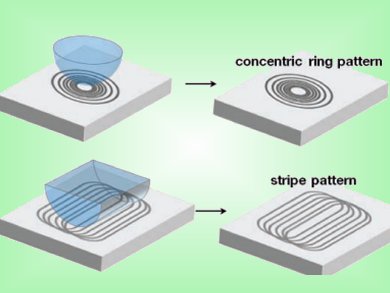Surface patterns on graphene can be created by lithography techniques that remove parts of the graphene material. Self-assembly approaches to forming surface patterns are expected to be simpler and cheaper than lithographic ones. This could make a big difference to how quickly graphene and graphene oxide-based materials become common-place in electronic devices.
Kwang S. Suh and colleagues, Korea University, South Korea, have reported a solvent-evaporation-driven self-assembly of reduced graphene oxide (RG-O). In this approach, RG-O platelets self-assembled into highly ordered structures over a large area either as periodic rings or parallel stripes. To achieve this, RG-O was suspended with a poly(ionic liquid) in the microscopic gap formed between a silica lens and a flat substrate. The geometry of the pattern was influenced by the shape of the lens and substrate, evaporation temperature, and concentration of the RG-O suspension.
- Self-Organized Graphene Patterns
T. Y. Kim, S. W. Kwon, S. J. Park, D. H. Yoon, K. S. Suh, W. S. Yang,
Adv. Mater. 2011.
DOI: 10.1002/adma.201100329




